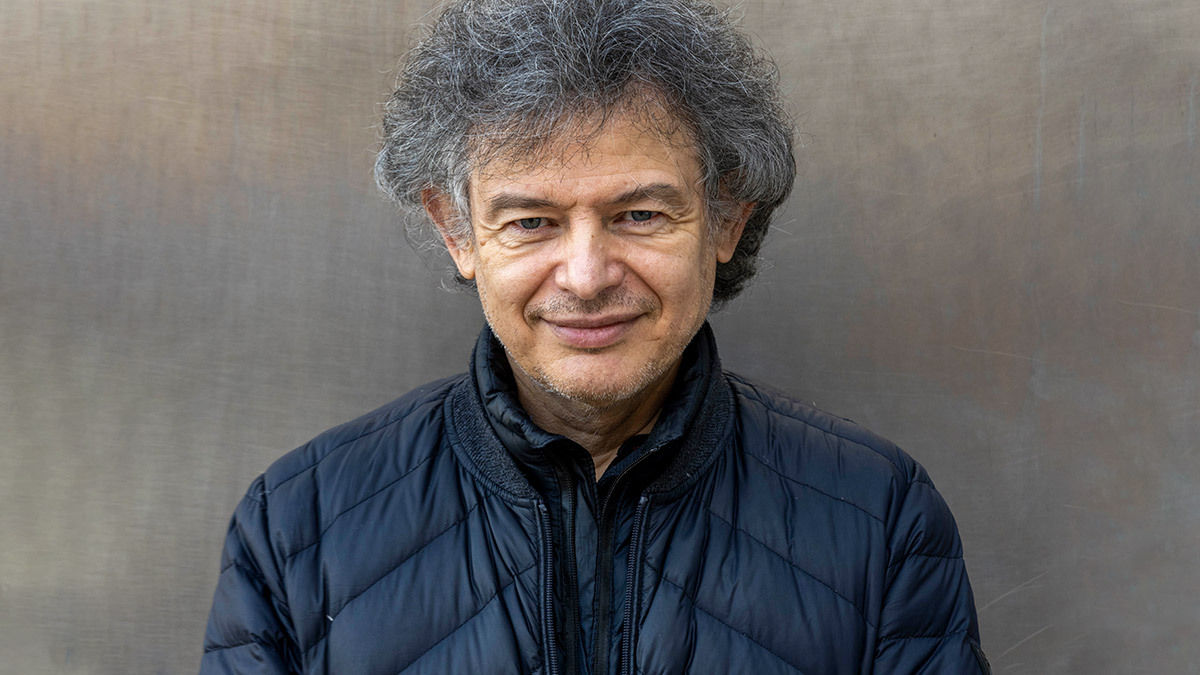01 —
FROZEN
MOVEMENT
The world came to a standstill. Absence became evident, and nobody was crossing the bridges. The world became a different world, unrecognizable and yet more recognizable than ever. Everything was so uncannily clear that you could see every pore in a city living behind closed doors. Routines and comings and goings quieted down, blurred.
The city produced a different sound, but nobody could hear it moaning. It was a silent cry, a dry cry, a cry in despair. Whispers wafted out of windows. If you sharpened your senses, you could hear the airborne conversations getting around, invisible as they reached no ears. Life changed by the hour, by the minute, by the second, just like the light of those never-ending days that nevertheless ended in night—a night where silence was even more perceptible. In those days, the best way of being present was being invisible; ceasing to be in order to continue being was the best way of existing.
Reality is the most perfect form of fiction
Carlos del Amor
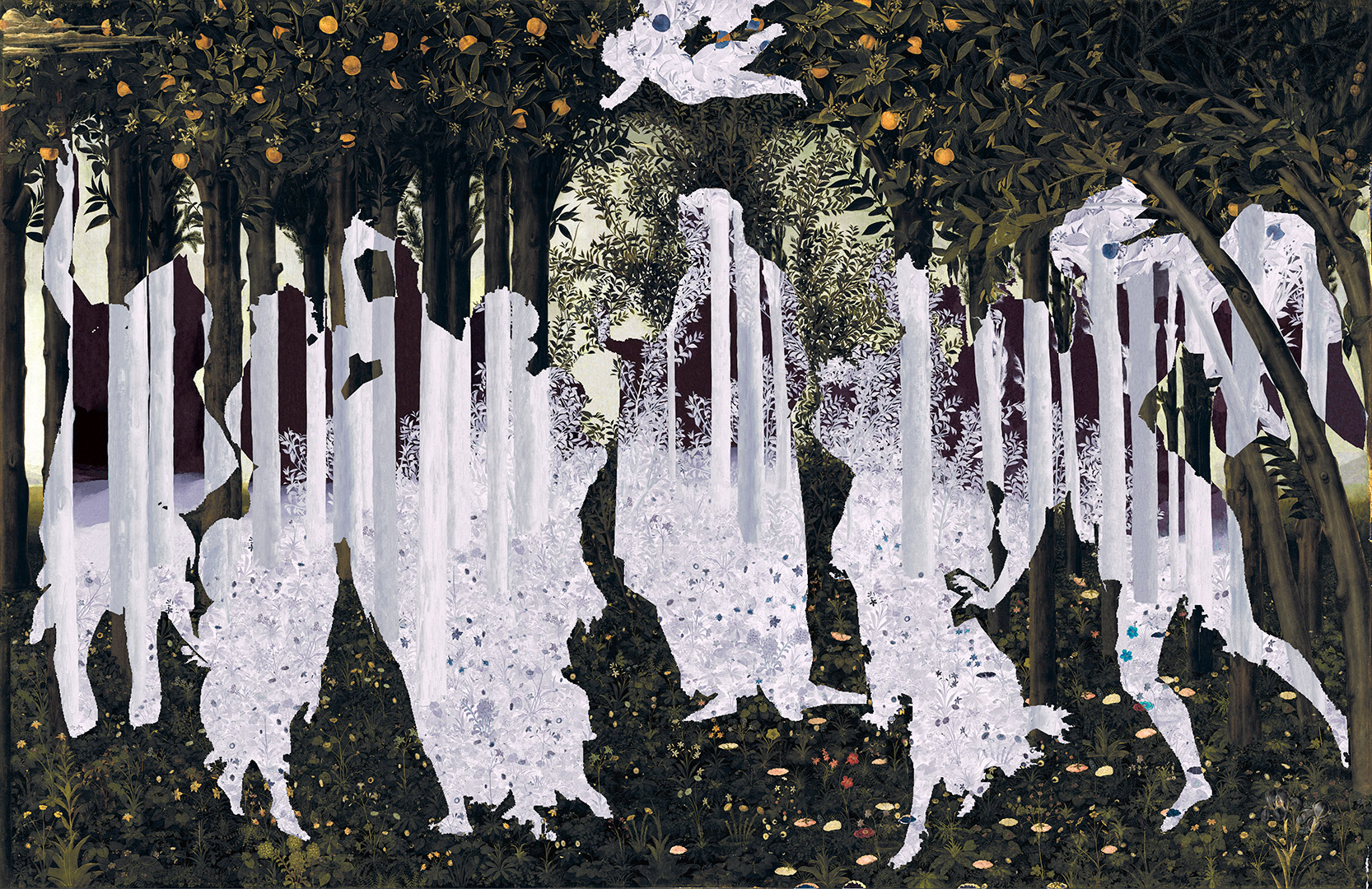

Fantasy Based on Spring 1 (Fantasía a partir de La Primavera 1), 2015
Photo on canvas
203 x 314 cm


Fantasy Based on Spring 3 (Fantasía a partir de La Primavera 3), 2018
Photo on canvas
203 x 314 cm
Twenty-seven days without a tram and flowers are growing around the rails
Carlos del Amor


Bilbao 10-04-2020 12:16 pm (Bilbao 04-10-2020 12:16 h), 2020
Direct printing on Dibond
288 x 200 cm
NO ONE
WAS CROSSING
THE BRIDGES
It is obvious, but also curious, that in order for us to say that a place is empty, we have to have first seen it full. Nothingness doesn’t exist if we haven’t first seen the crowds. For this reason, we were more necessary than ever to illustrate the absence that dominates the photographs in this book. The brain, which so often betrays us, at times does not grasp this emptiness and begins to fill those suspended bridges in the pictures itself, without permission. Thus, although they’re not actually there, we think we can see people crossing La Salve bridge, lightening their steps while that imposing stranded ship that is the Museum sails towards us. We heard the steps that aren’t there, the roar of the engines of cars that aren’t circulating, the cry of a child that didn’t walk by there that day.
They were all present, perhaps more than ever. They were all walking along those streets on that day in April 2020. They were all closing their eyes, squeezing their eyelids shut as if with this gesture they could get back their yearned-for routine, broken in a cloudy-skied spring, just for a few seconds.
The world came to a standstill and no one was crossing the bridges.


La Salve bridge, Bilbao 04-10-2020 11:15 am (Puente de La Salve, Bilbao 10-04-2020 11:15 h), 2020
Direct printing on Dibond
266 x 200 cm
NO ONE WILL
GET WET


Gran Vía D. Diego López de Haro 04-10-2020 2:04 pm (Gran Vía D. Diego López de Haro 10-04-2020 14:04), 2020
Direct printing on Dibond
200 x 140 cm
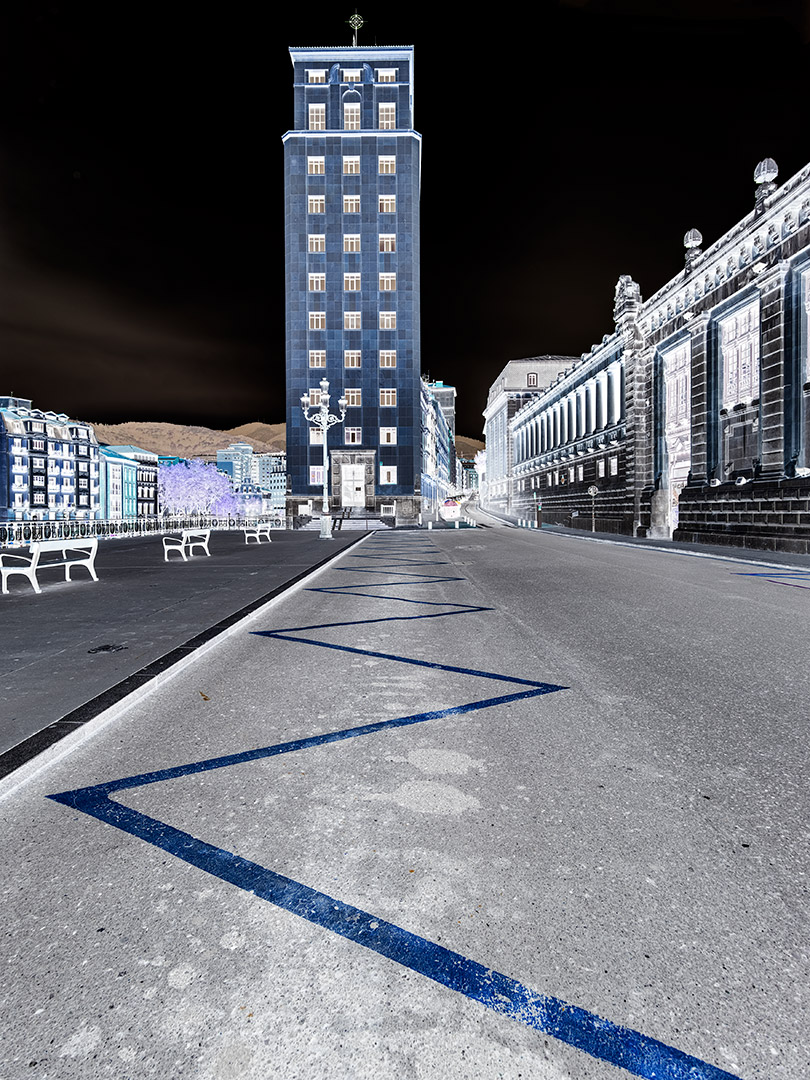

Calle Bailén 04-10-2020, 5:03 pm (Calle Bailén 10-04-2020 17:03 h), 2020
Direct printing on Dibond
200 x 150 cm
It’s going to start raining again and no one will get wet. There will be time to splash in the puddles again
Carlos del Amor


Guggenheim Museum Bilbao 04-10-2020, 2020
Direct printing on Dibond
226 x 300 cm
02 —
HIDDEN
SPACES
Emptiness is with us through different presences: in the guise of an illness, sadness, loneliness, yet also as an opportunity for inner exile, to deal with our own ghosts, as a sublime expression of love or of the most important thing in life, vitality, thinking.
This exhibition forces us to notice the tension of every moment as an invitation to peer at past and present situations and consider a hopeful future.
Petra Joos
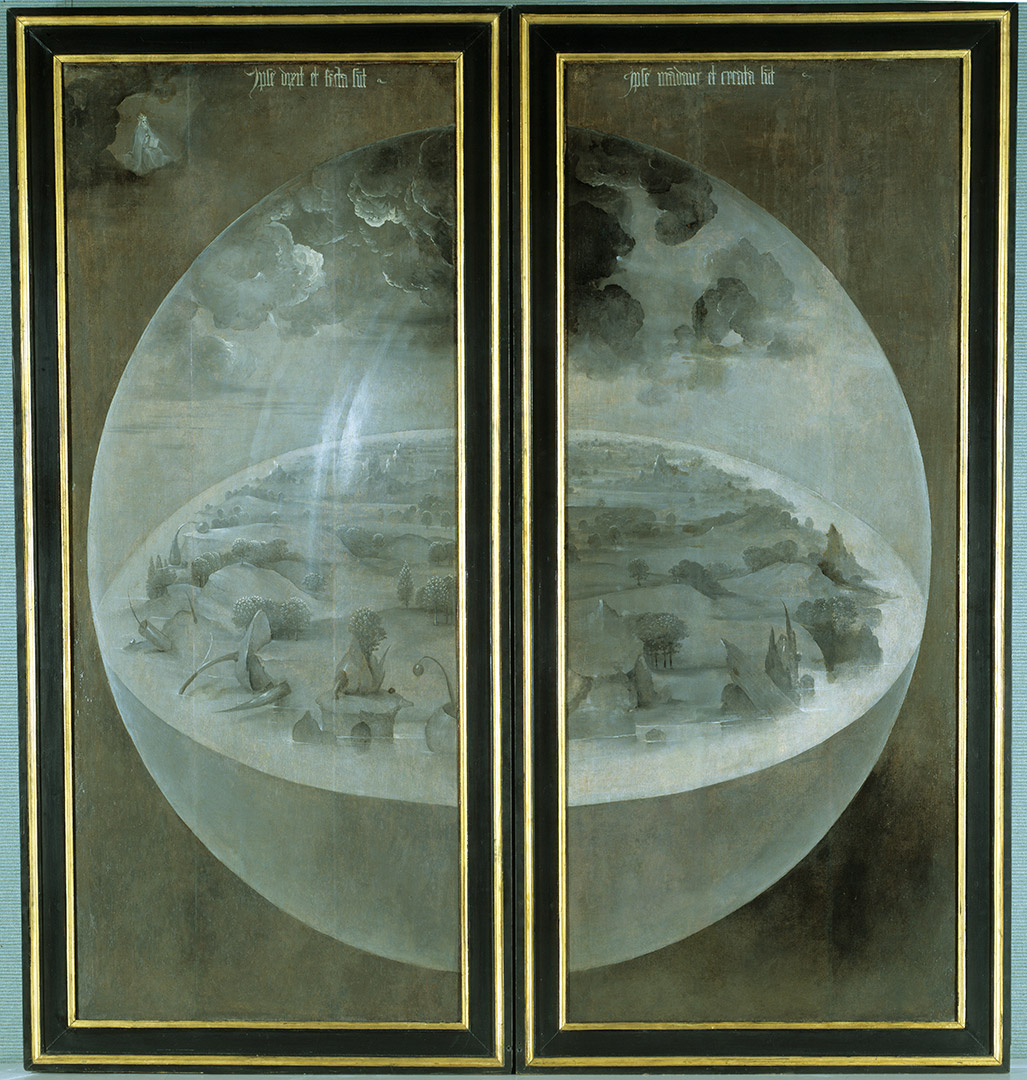

Hidden Garden (Jardín oculto), 2014 (video)
Direct print on canvas
204 x 192 cm


The Uninhabited Garden (El jardín deshabitado), 2008
Direct print on canvas
204 x 384,2 cm
I KNOW
YOU'RE THERE
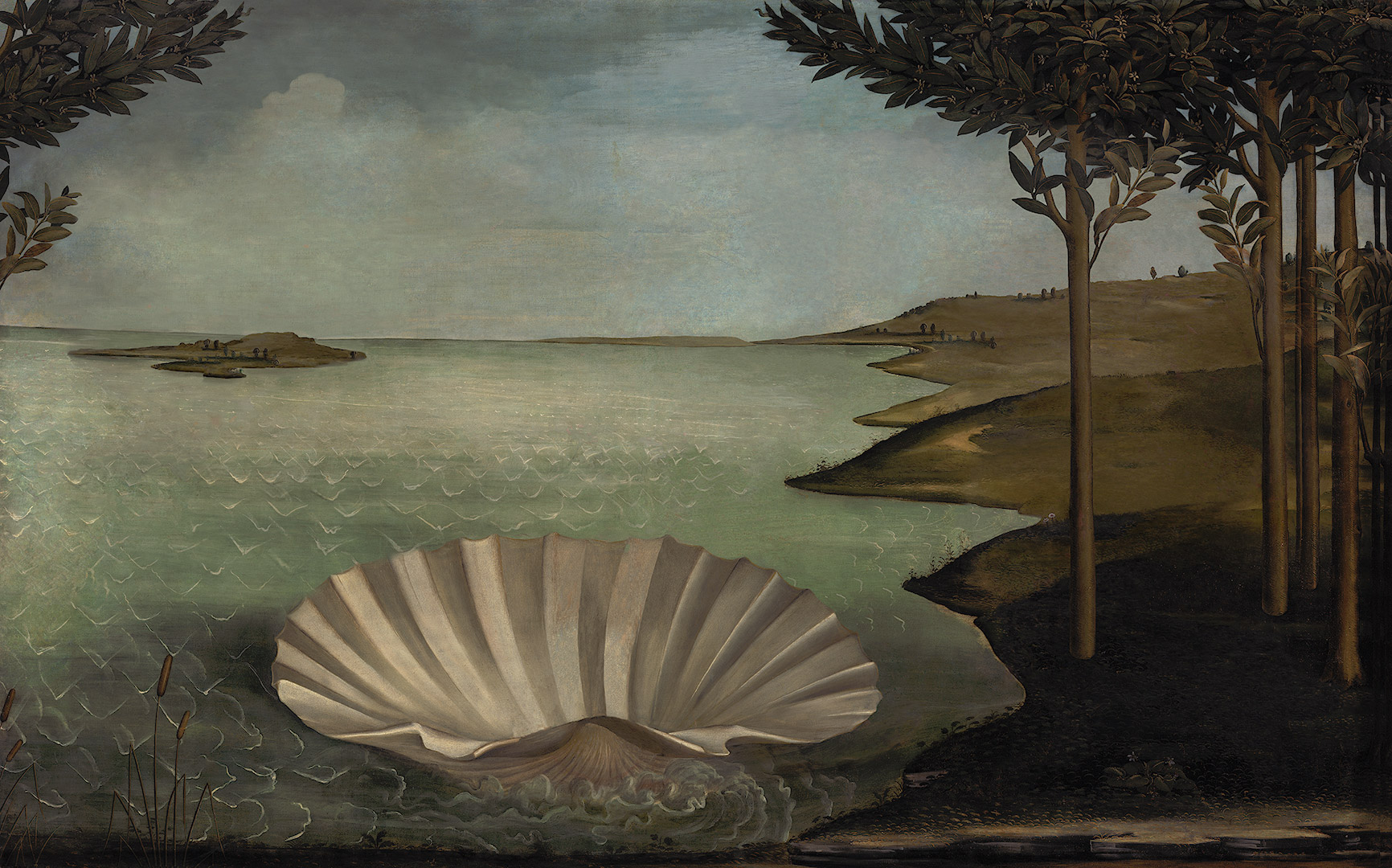

Place of Birth (Lugar para un Nacimiento), 2012
Direct print on canvas
173 x 277,5 cm
EVEN IF
I CAN'T SEE YOU
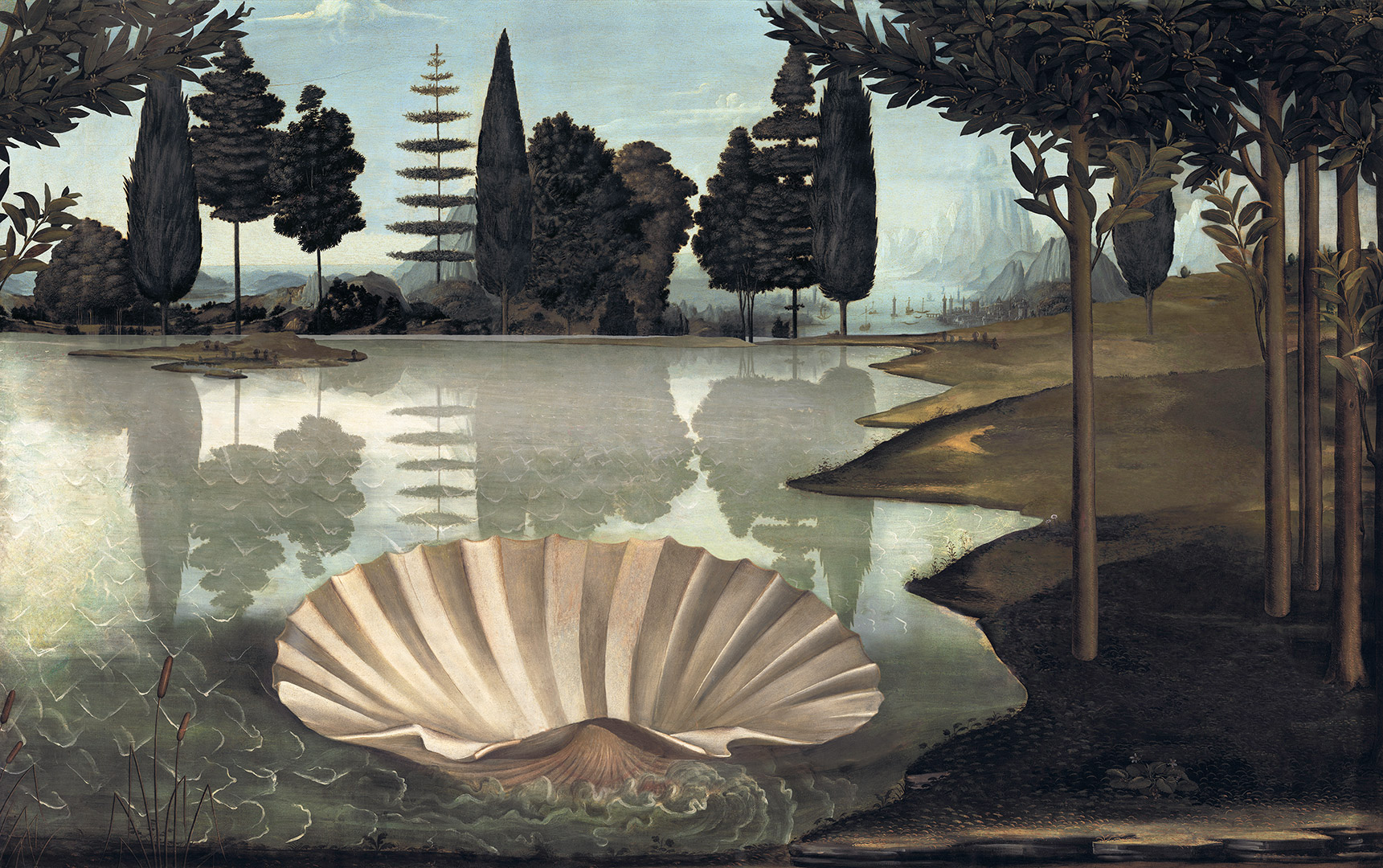

Italian Fantasy (Fantasía italiana), 2012
Digital print on Airtex PVC
98,5 x 154 cm
Art cannot change reality, but it can at least try to change the way we understand it. That’s the first step to the future
José Manuel Ballester


Spring (Primavera), 2015
Direct print on canvas
203 x 314 cm
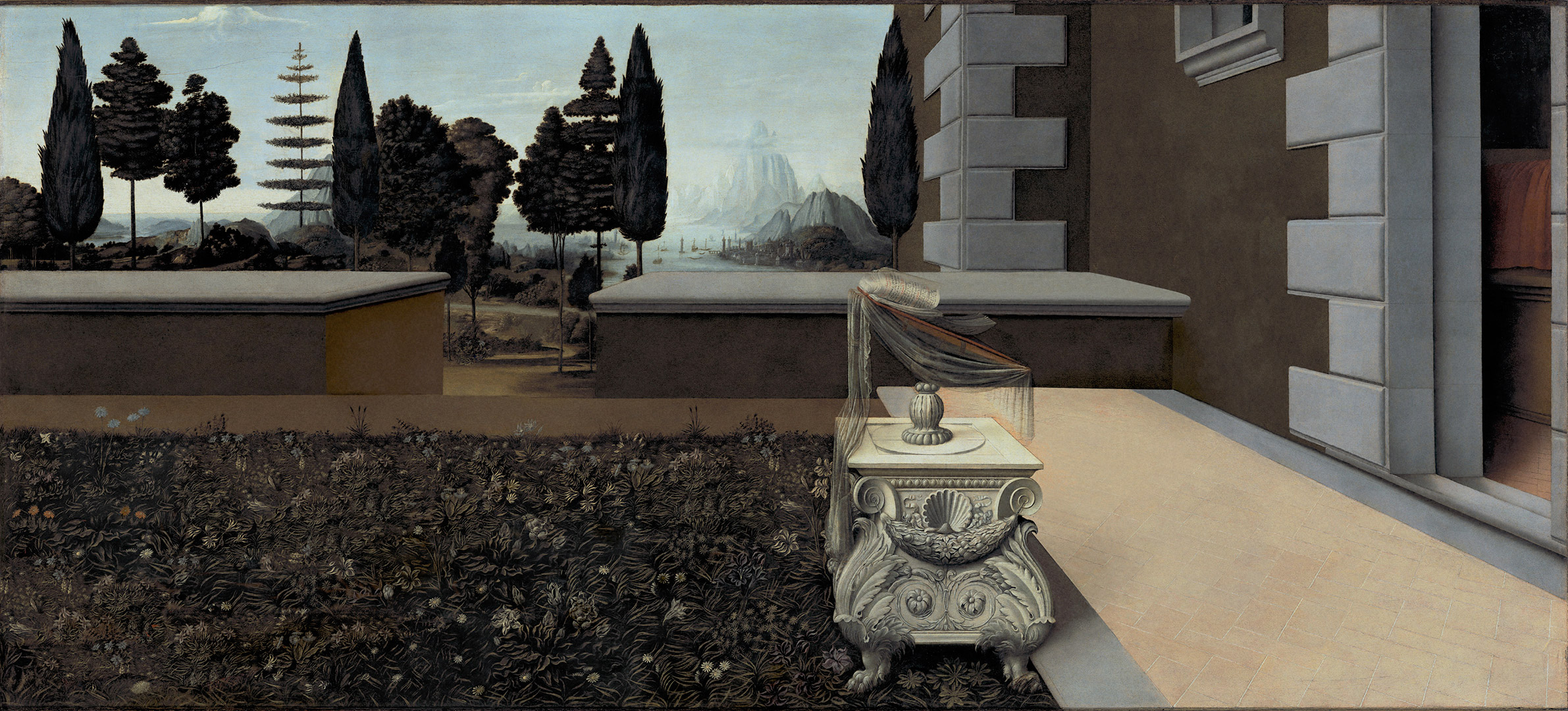

Place for Annunciation 2 (Lugar para una Anunciación 2), 2012
Direct print on canvas
99,3 x 217 cm
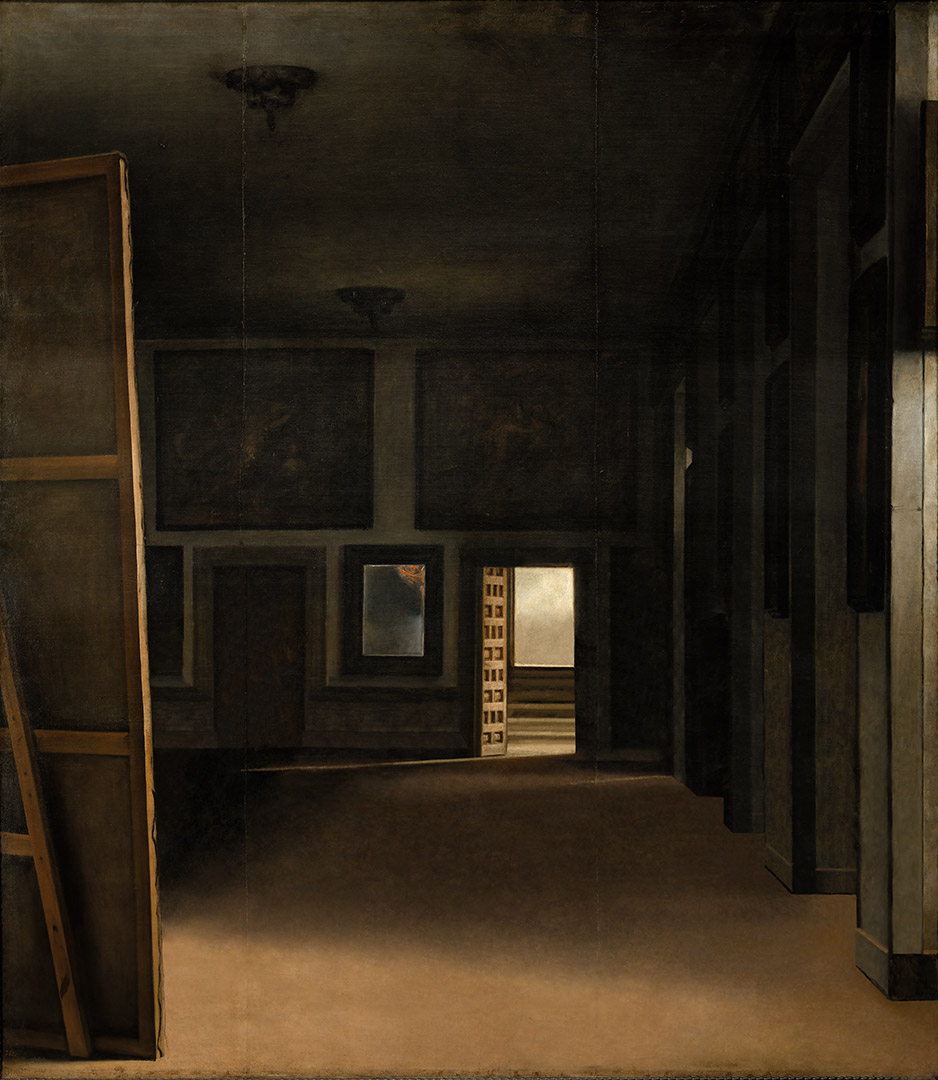

Royal Palace (Palacio Real), 2009
Direct print on canvas
318,4 x 276 cm
Guggenheim Bilbao Museoa
03 —
GRIEF-STRICKEN
SOUL
We may be witnessing the desolation of a landscape after a battle, the place that remains when nothing remains anymore. That place that has been trodden upon so many times, from which we have been so suddenly, unbiddenly expelled. There it is—what used to be our life, our history; there is the happiness we used to enjoy before everything filled with clouds, and bombs from which it was impossible to shelter again began to drop. Every spot spirits us back to that instant immediately after everything happened, when the always-fragile tranquility was broken and the deafening cries began, though nobody heard them.
That empty scene represents the thousands of empty scenes which have paraded through history. That place is Gernika, and it’s Hiroshima; it’s Iraq and Afghanistan; it’s Rwanda and the Balkans, Kosovo, Liberia… All those places where innocent people suffered and wept and sought answers by peering up into a sky that didn’t even know the questions.
Life is divided into three periods, past, present, and future. Of these, the present is short, the future is doubtful, the past is certain
Seneca
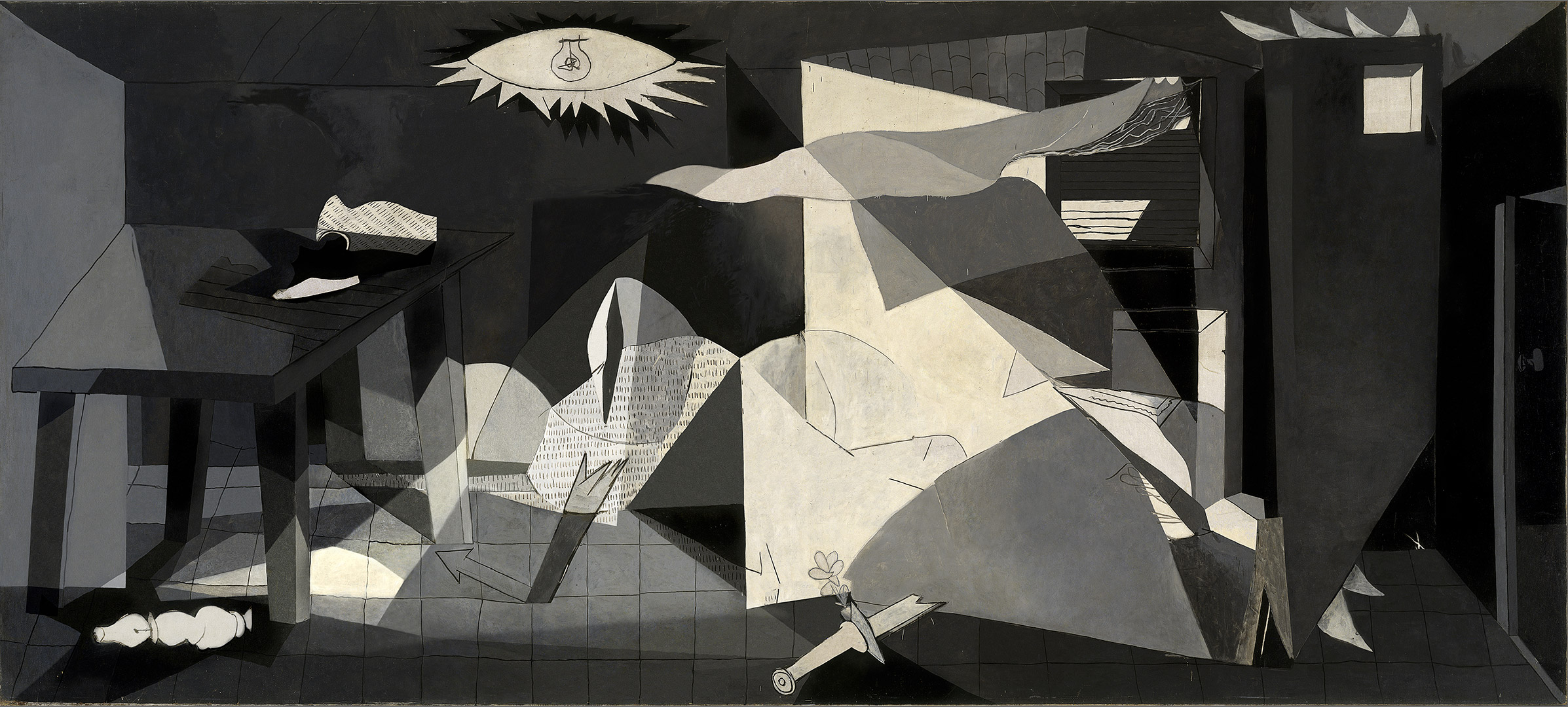

About the Guernica (En torno al Guernica), 2009/2020
UVI printing on linen, varnished
349, 5 x 781,5 cm.
If we have become aware of anything with the health crisis it is our vulnerability; we thought we were invincible and we are as fragile as the residents of Gernika one day, 26 April 1937, in what was curiously, stealing the title of a book by Benedetti, another spring with a broken corner like the one we’ve all experienced.
Getting back to the site of the events, we see that the light is left on in the midst of an overly long night, the light that keeps total darkness at bay, which is also needed to view the horror, because if we don’t see the horror we run the risk of thinking that nothing happened, even if we’re masters in immunizing ourselves against everything.
José Manuel Ballester had the delicacy of leaving in the scene the flower that Picasso painted, next to the broken sword. That flower is what we could clasp onto yesterday and today. That flower is proof that there may be a future in which we can live without cries, without tears, without desperation. A future where scenes that could once again inhabit Picasso’s work are not repeated every few years.
Black, white, gray, and blue swirl in the painting, accentuating the contrast, while the flower may represent the hope that a new color is born that can impose itself on this palette. Time will tell. But, at the risk of sounding pessimistic, it is hard to imagine that there won’t be more “Guernicas” in the future, that more people won’t disappear from places besieged by senselessness and greed. If we have learned anything over the centuries, it’s that we are incapable of learning anything.
Yes, we do yearn for that flower, but at the moment of truth we seize hold of the sword, and so it is impossible for springtime to prevail.

Carlos del Amor
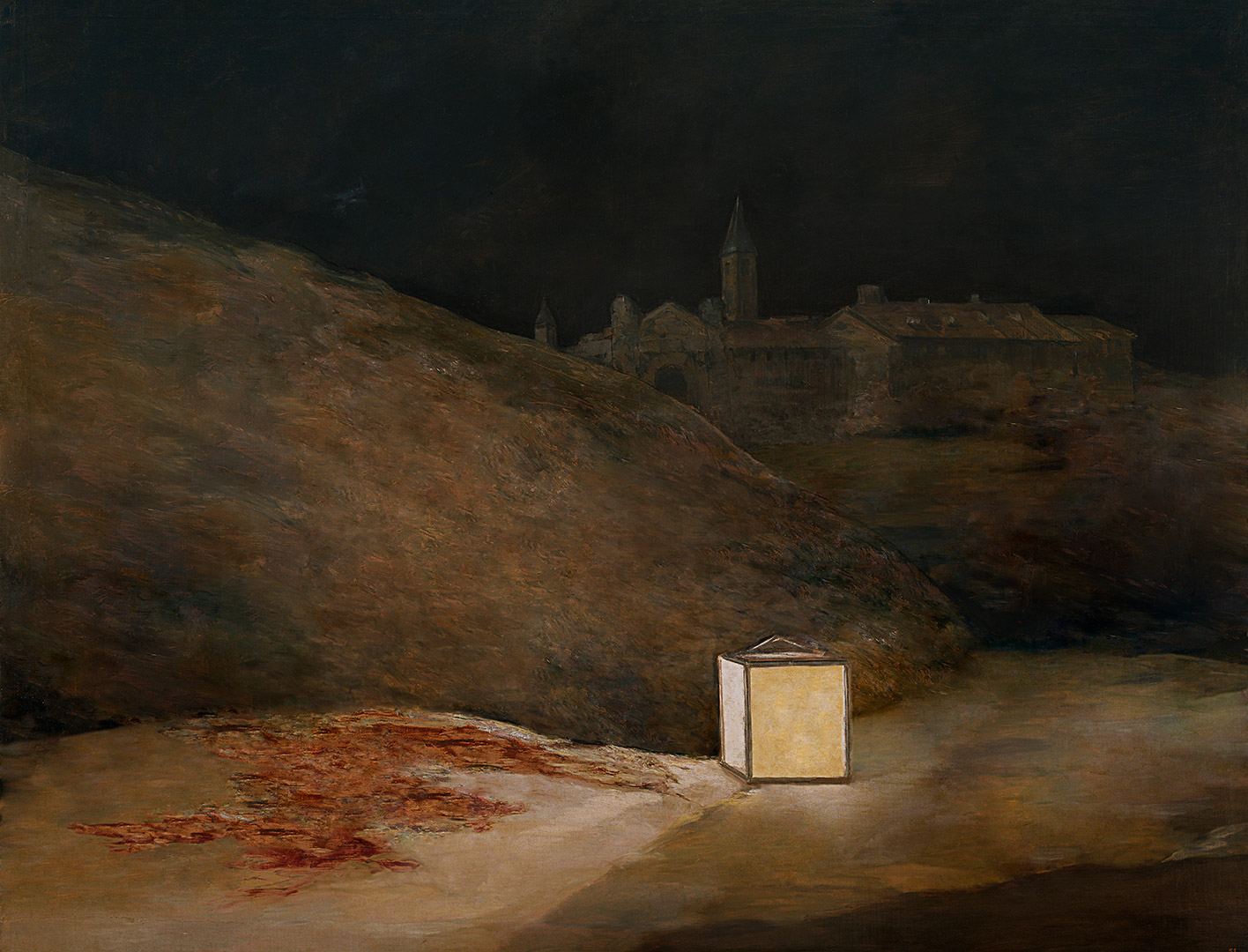

The Third of May (3 de mayo), 2008
Direct print on canvas
268 x 351 cm
Guggenheim Bilbao Museoa
My intervention on Guernica, as on The Third of May and some of the prints in Goya’s The Disasters of War, is an attempt at bringing to the present the events that inspired these works and comparing them to contemporary conflicts. We’re moved and shocked by them, but eventually they vanish from consciousness when they feel distant.

José Manuel Ballester
PROTECT ME
FROM WHAT
I WANT
Jenny Holzer
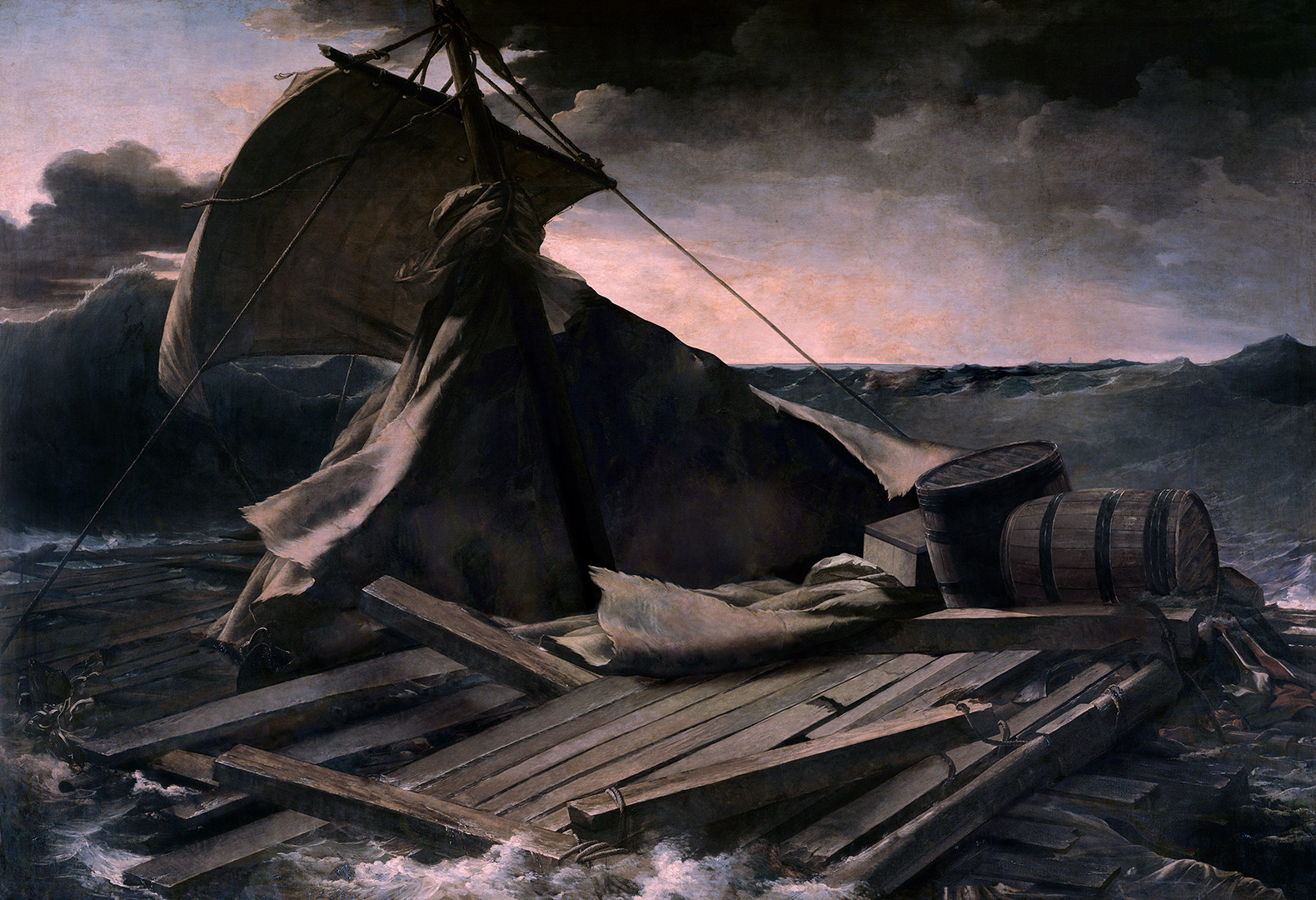

The Raft of the Medusa, 2010
Direct print on canvas
491 x 717 cm
Guggenheim Bilbao Museoa
We have faith in poison. We know how to give our whole lives every day. This is the age of assassins
Arthur Rimbaud
When you strip paintings of their characters, you’re faced with a desolate, absurd landscape that brings out the horror in the wake of human savagery.

José Manuel Ballester
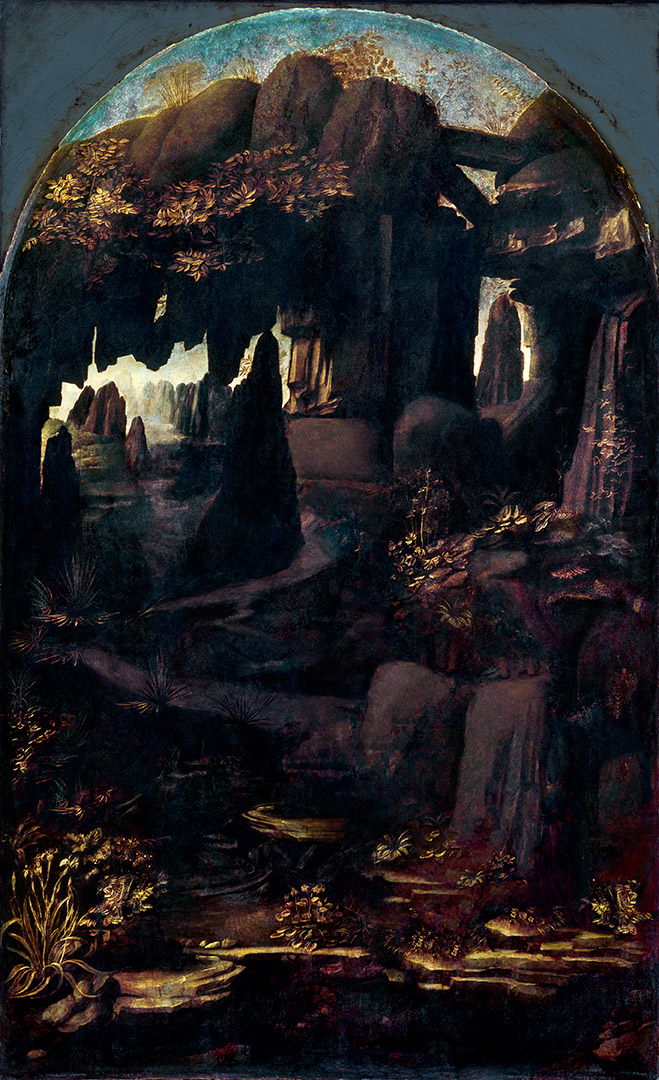

Rock Landscape (Paisaje de rocas), 2010
Direct print on canvas
199 x 122 cm
04 —
SO FARAWAY
SO
CLOSE
These unusual images reflect the reality experienced in Bilbao and in many other cities around the world during the confinement, and along with About the Guernica, 2009/2020, they convey a faithful yet updated image of the historical event and the human tragedy by offering a reflection of the horrifying consequences of events like wars and pandemics.
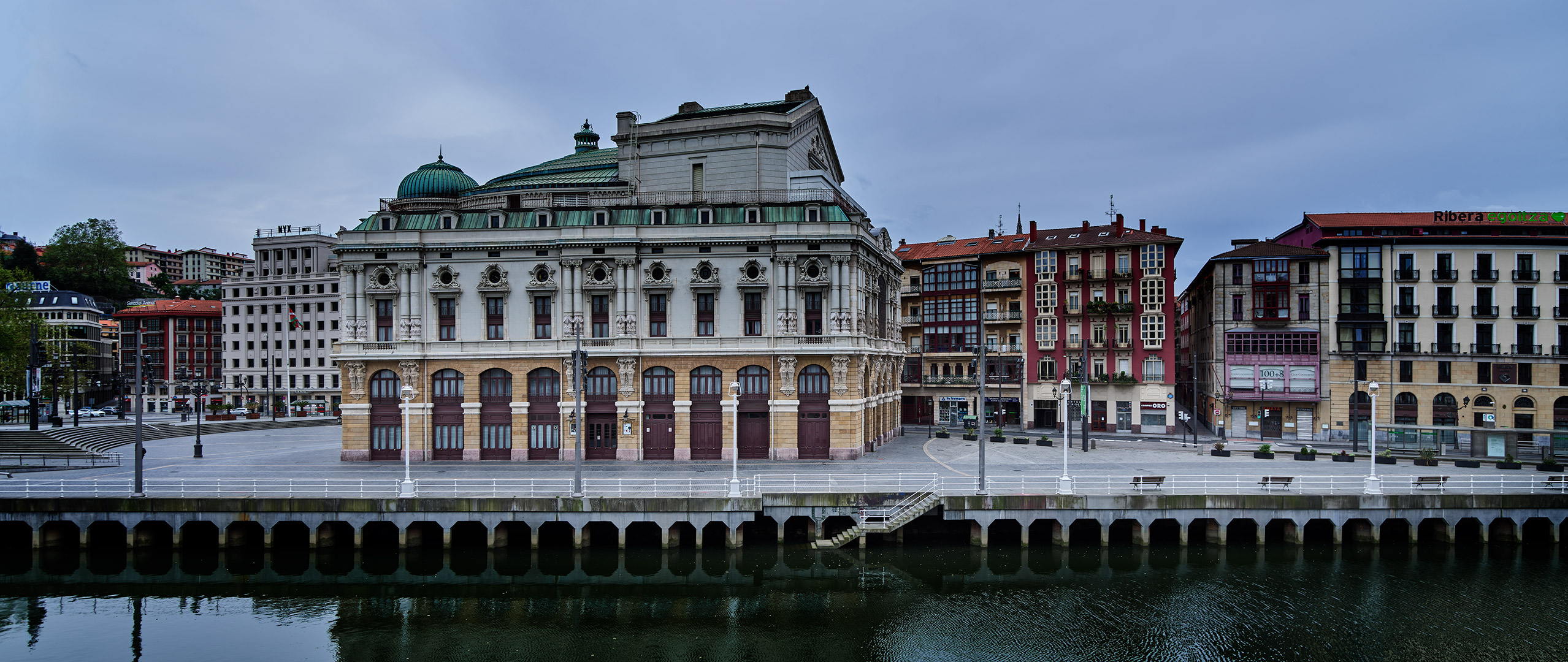

Arriaga Square 04-10-2020 4:31 pm (Plaza Arriaga 10-04-2020 16:31 h), 2020
Direct printing on Dibond
134 x 300 cm
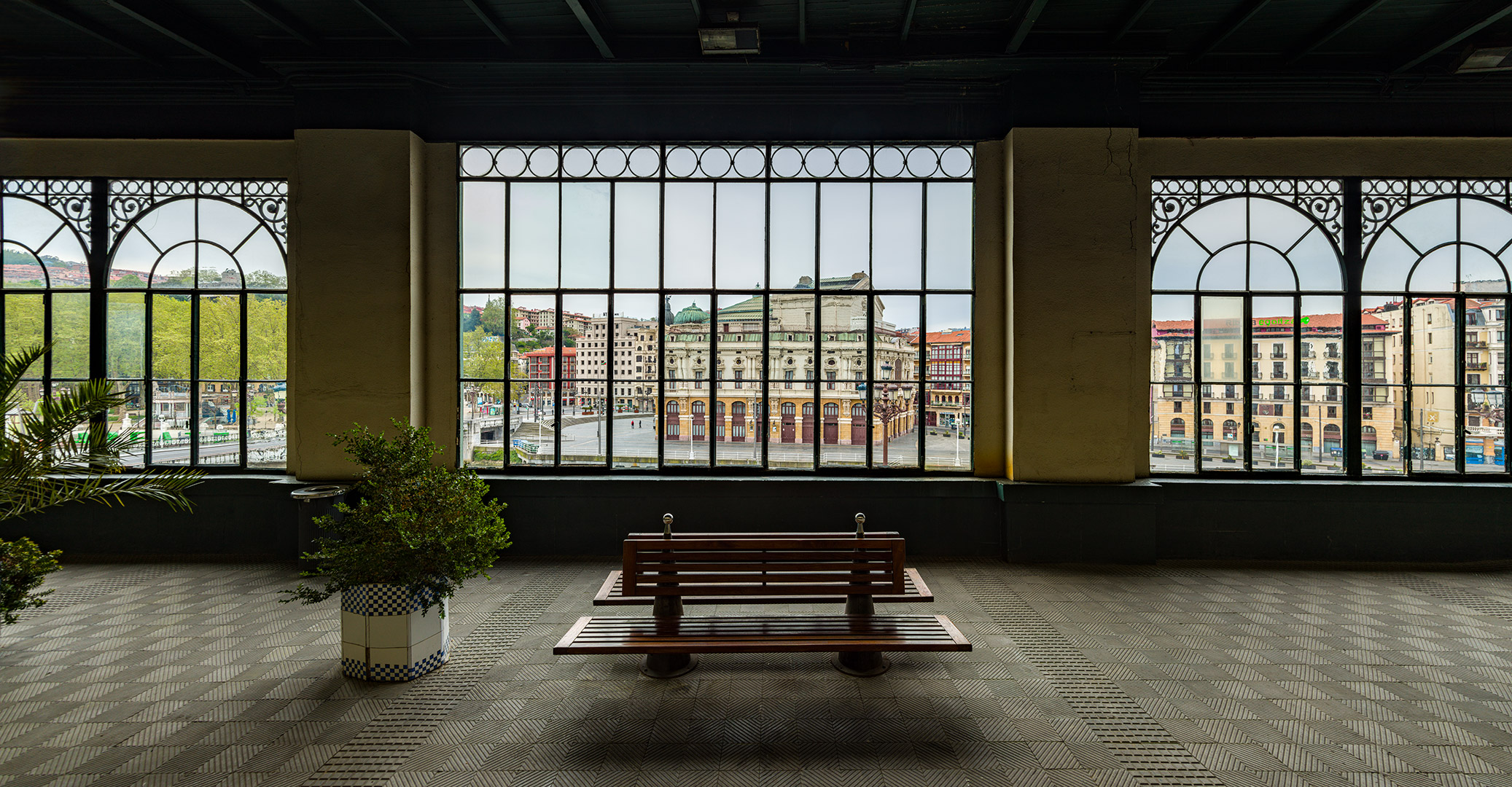

La Concordia Station, Calle Bailén (Estación de La Concordia, calle Bailén 10-04-2020 16:49 h), 2020
Direct printing on Dibond
122 x 239 cm
Where to cross the street when you can cross it anywhere?
Carlos del Amor


NY 11/18/01 2:49 pm (NY 18/11/01 14:49), 2018
Direct printing on Dibond
180 X 240 cm
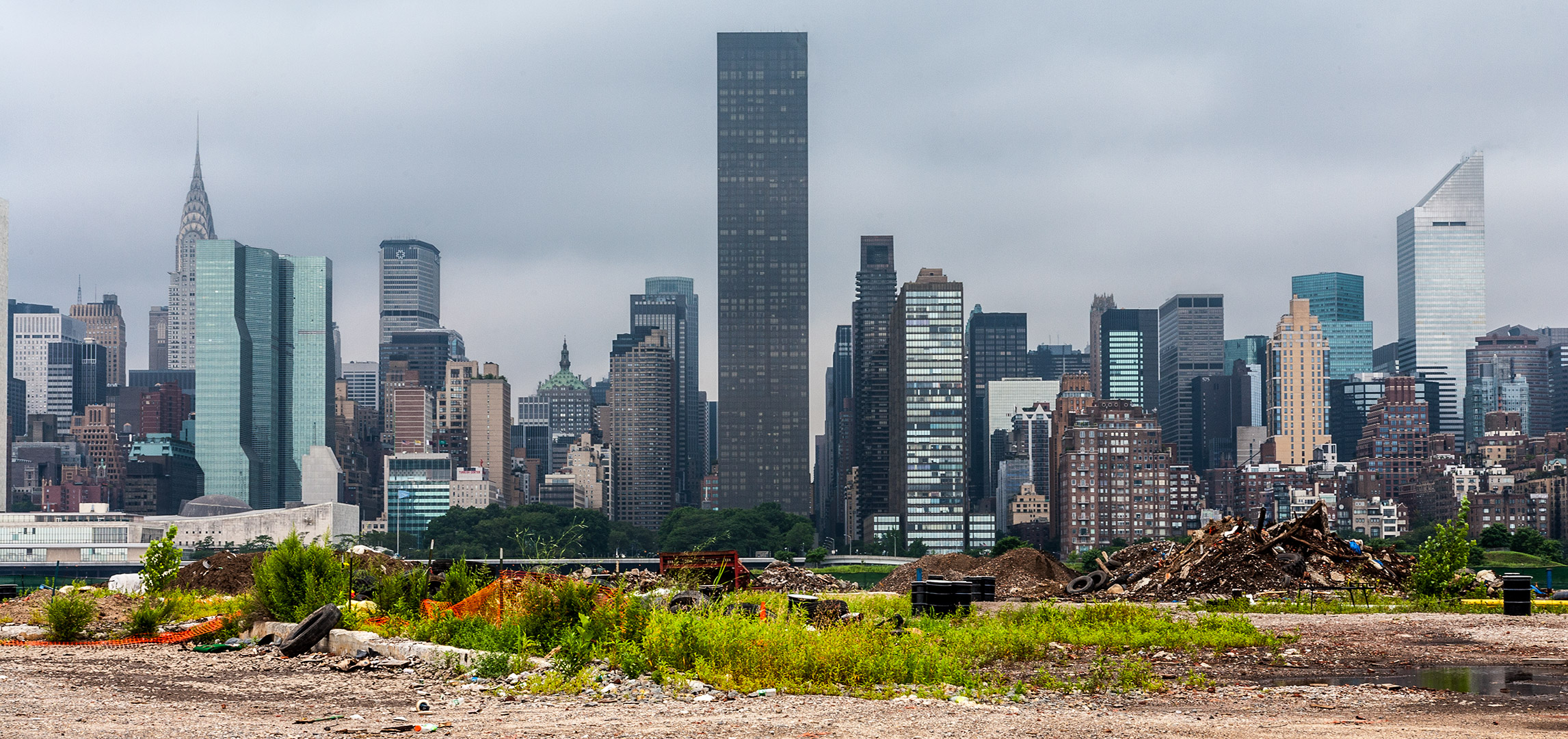

Manhattan 3, 2006
Direct printing on Dibond
141 x 300 cm


23 Street, 2008
Direct printing on Dibond
167,3 x 300 cm
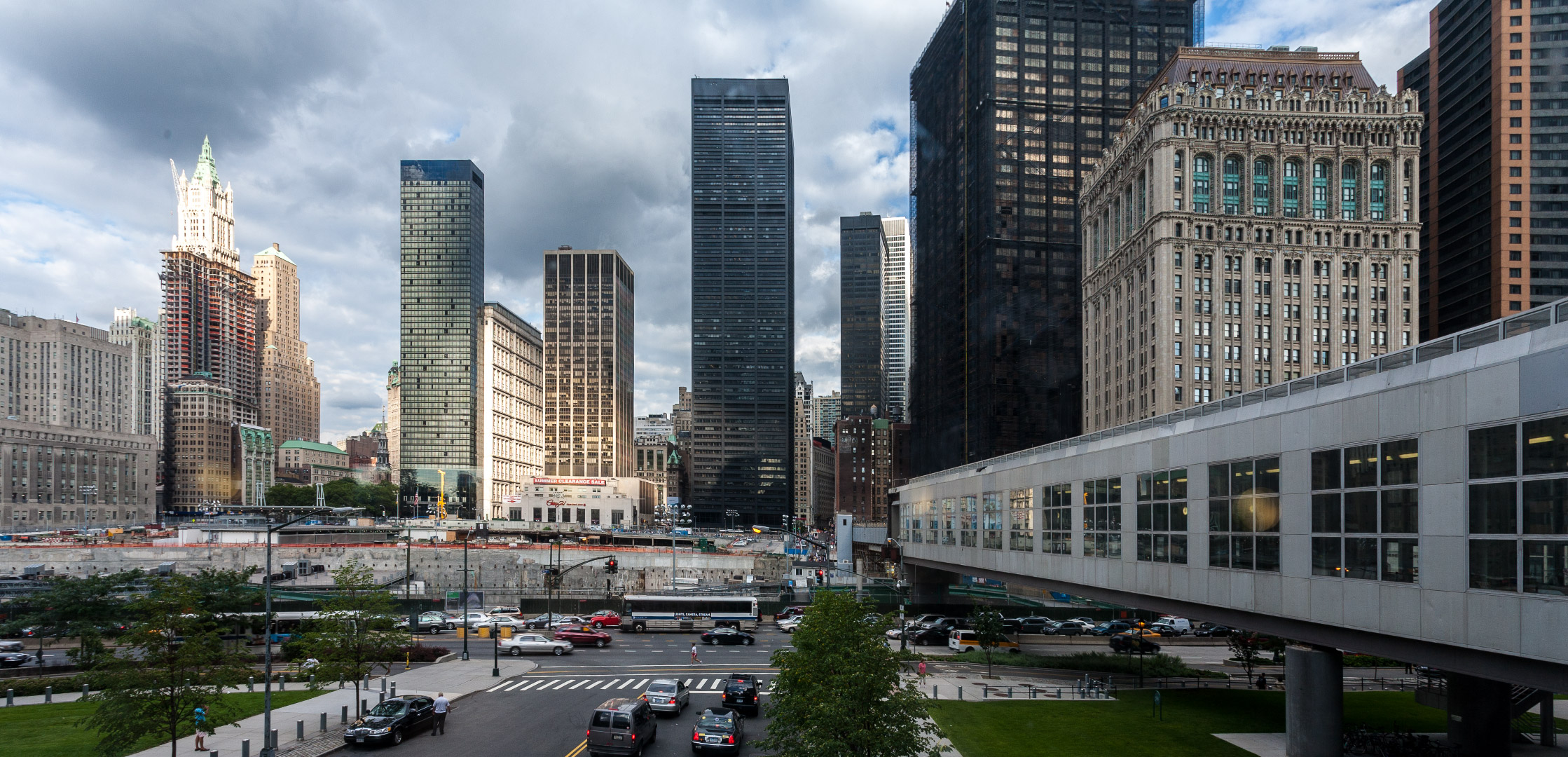

NY Ground Zero (NY Zona Cero), 2008
Direct printing on Dibond
144,7 x 300 cm
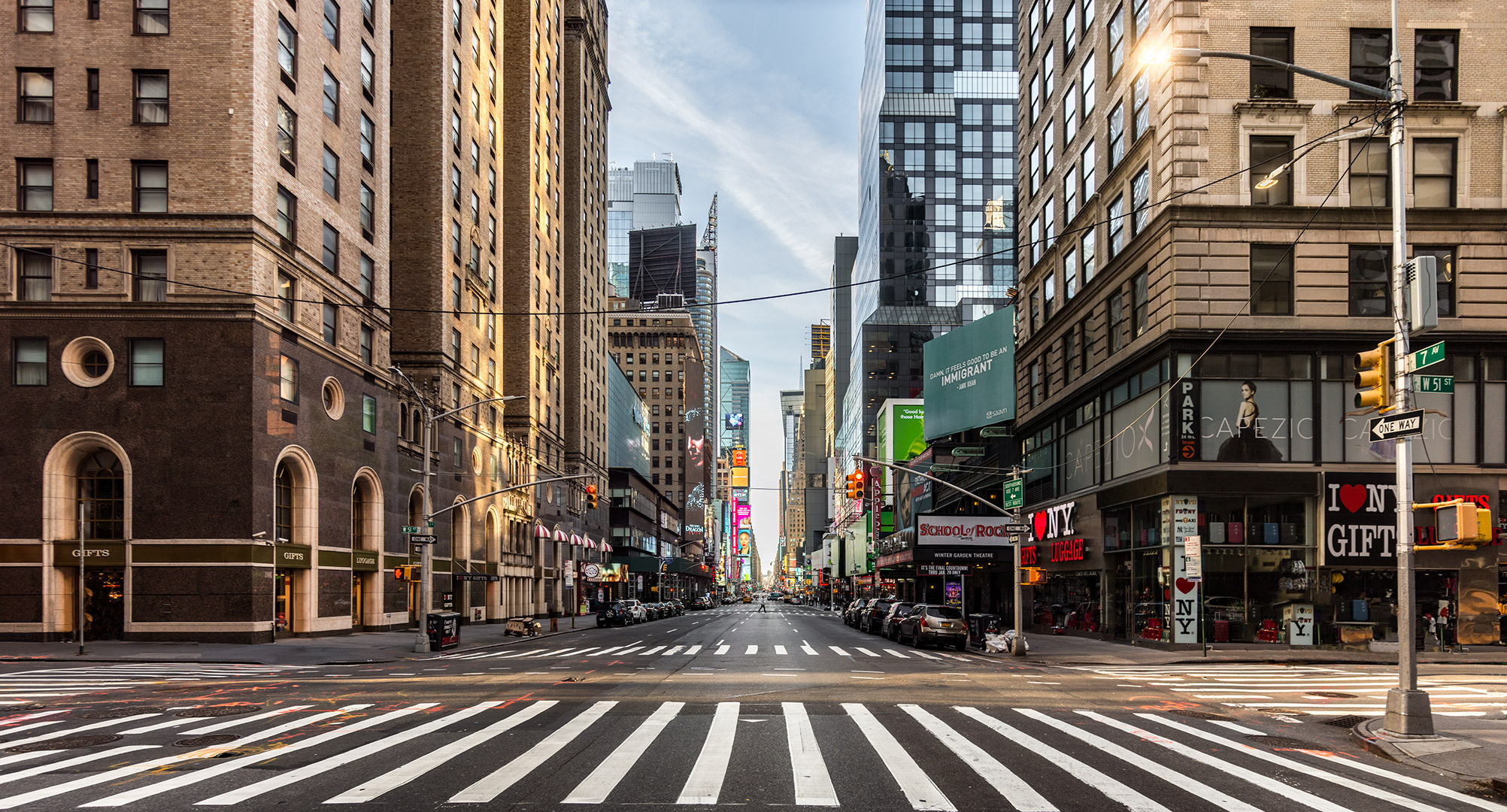

NY 11/18/04 9:26, 2018
Direct printing on Dibond
161,6 x 300 cm
Ballester is interested in empty places, in portraying people through their faces and reflections. His works inquire into the solitude of the individual and the contradictions of the modern world through their urban settings; everyday places are transformed into timeless backdrops where the hidden and the visible, the public and the private, the bipolar, act as factors that reveal the human condition.

Petra Joos


Venice 1 (Venecia 1), 2017
Direct printing on Dibond
200 x 266 cm
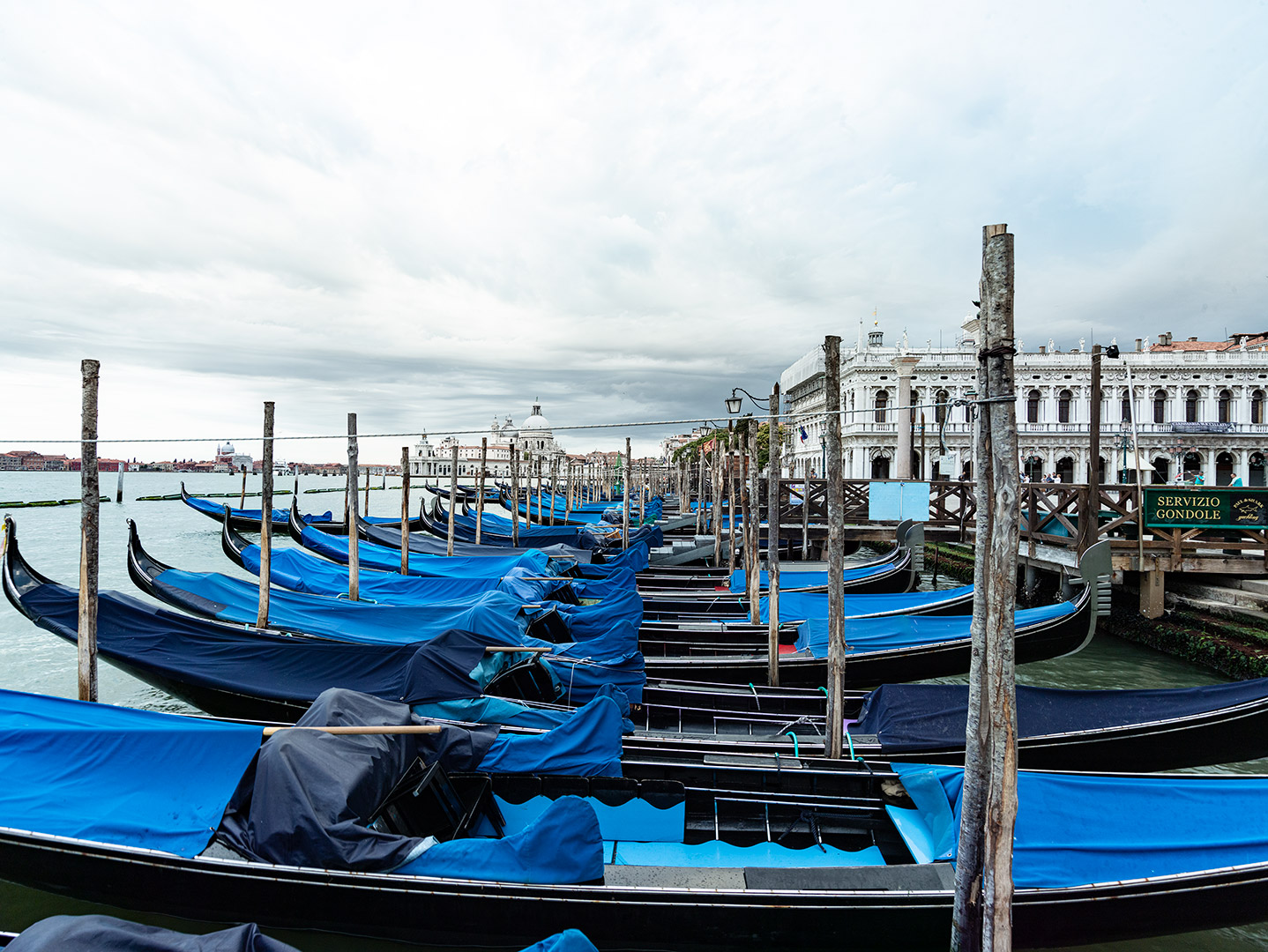

Venice 2 (Venecia 2), 2017
Direct printing on Dibond
200 x 266 cm
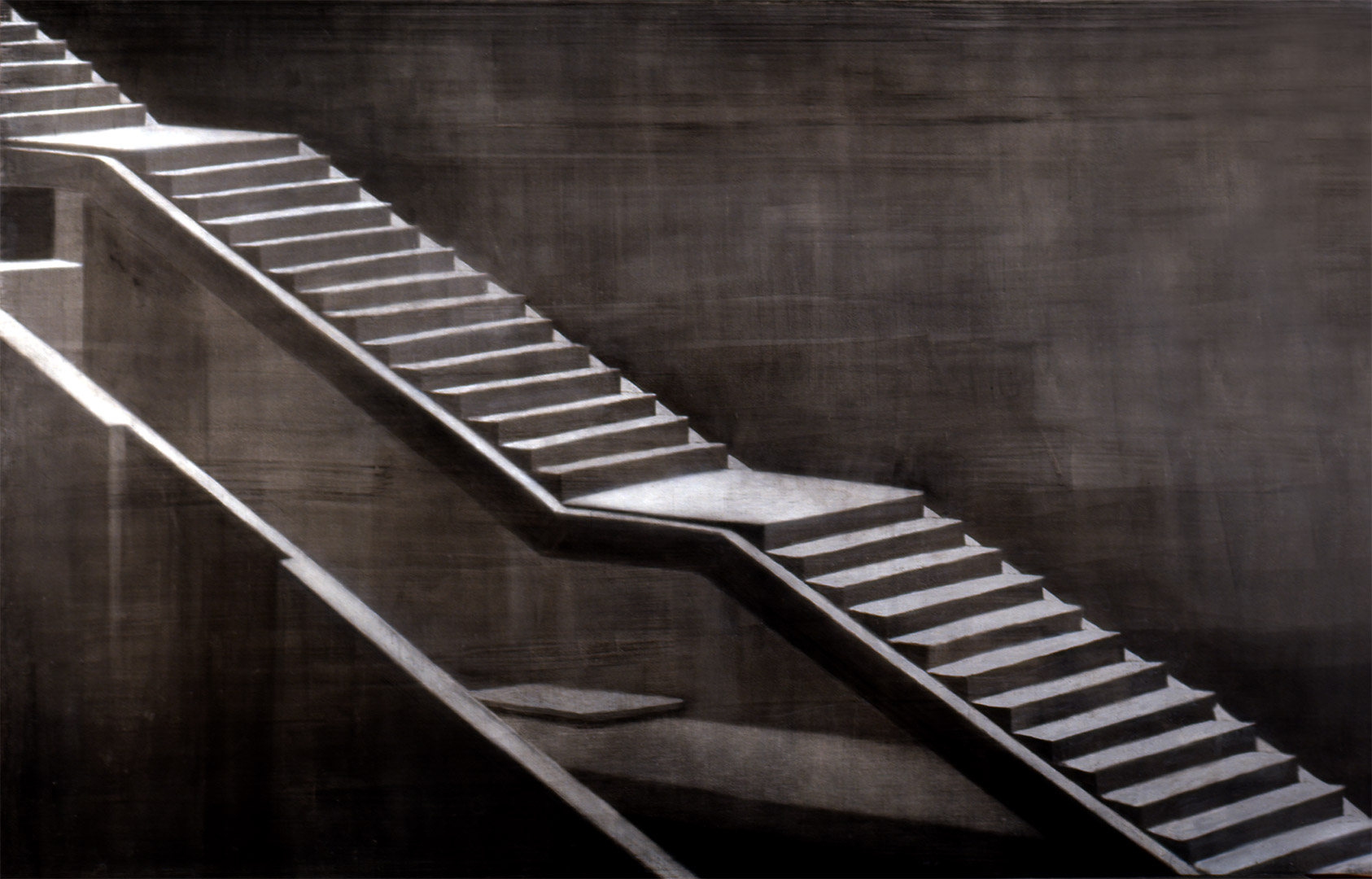

Stairs Under Construction (Escalera en construcción), 2003
Acrylic on paper glued on board
156,5 x 250 cm
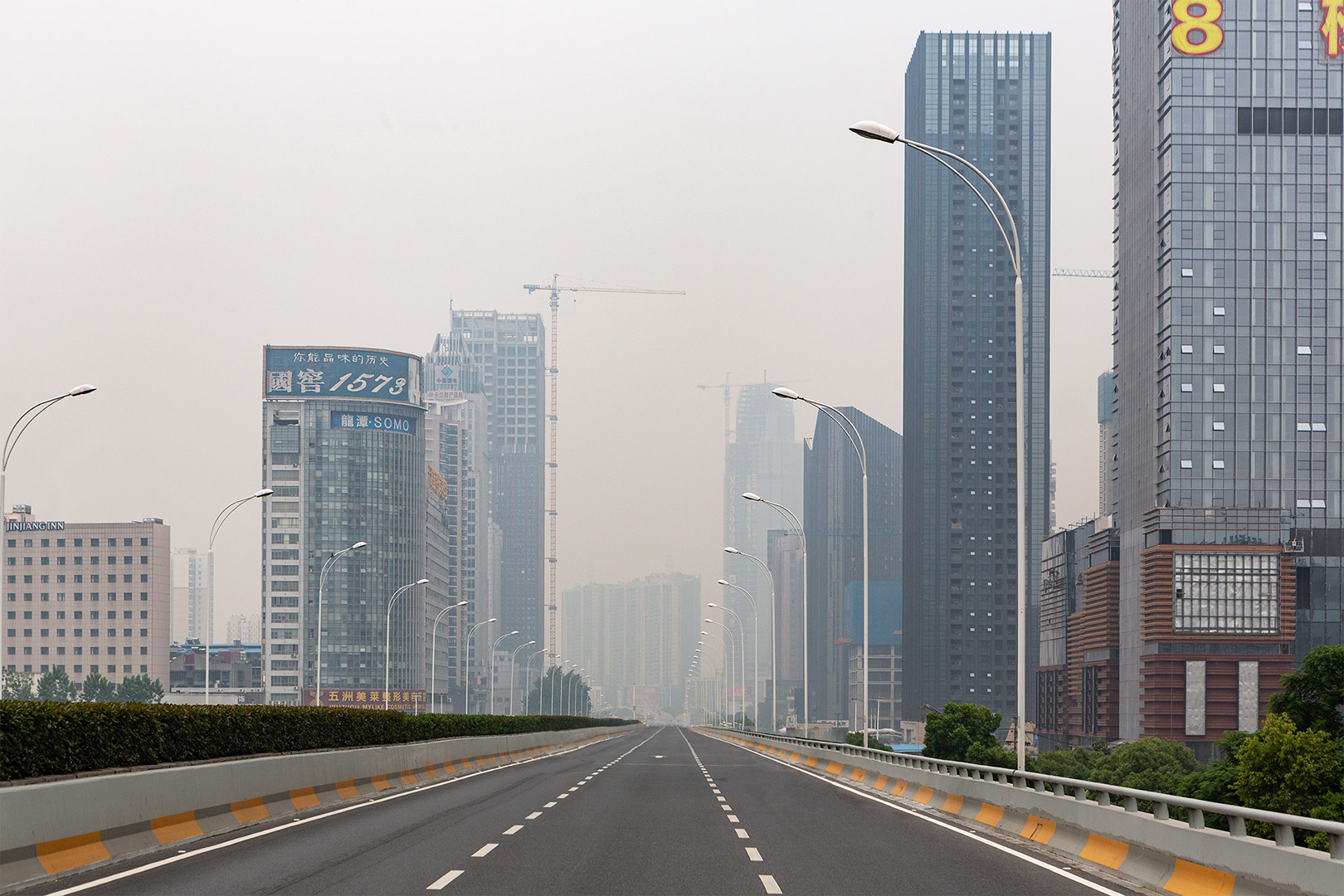

Wuhan 2, 2014
Direct printing on Dibond
160 x 240 cm
Where to cross the street when you can cross it anywhere? I’ve seen you cross from one side of this street to the other countless times, rubbing against each other at peak times, self-absorbed in our mobile phones, running to avoid arriving late to a meeting. All our appointments were important, until now, when we have realized that almost none of them urgently mattered. We have postponed life until it is possible to live it again. We are trying to regain that normality full of crosswalks in which we were trying to take the shortest route to reach our destination.

Carlos del Amor


London 1 (Londres 1), 2018
Direct printing on Dibond
103 x 300 cm
05 —
EMPTY
CITY
On my three-day visit to Bilbao during the confinement, I had the chance to take photographs of the empty city resulting from the pandemic that is still battering the world.
The human absence on the streets created unusual images of totally empty roads, avenues, and squares, but the most disturbing part was knowing that all the inhabitants were there, that they were just a few meters from me, protected within the walls of their homes. Despite being so close, silence reigned and was only broken occasionally, especially at the time of the tribute to the healthcare workers.
The world became a different world, unrecognizable and yet more recognizable than ever
Carlos del Amor
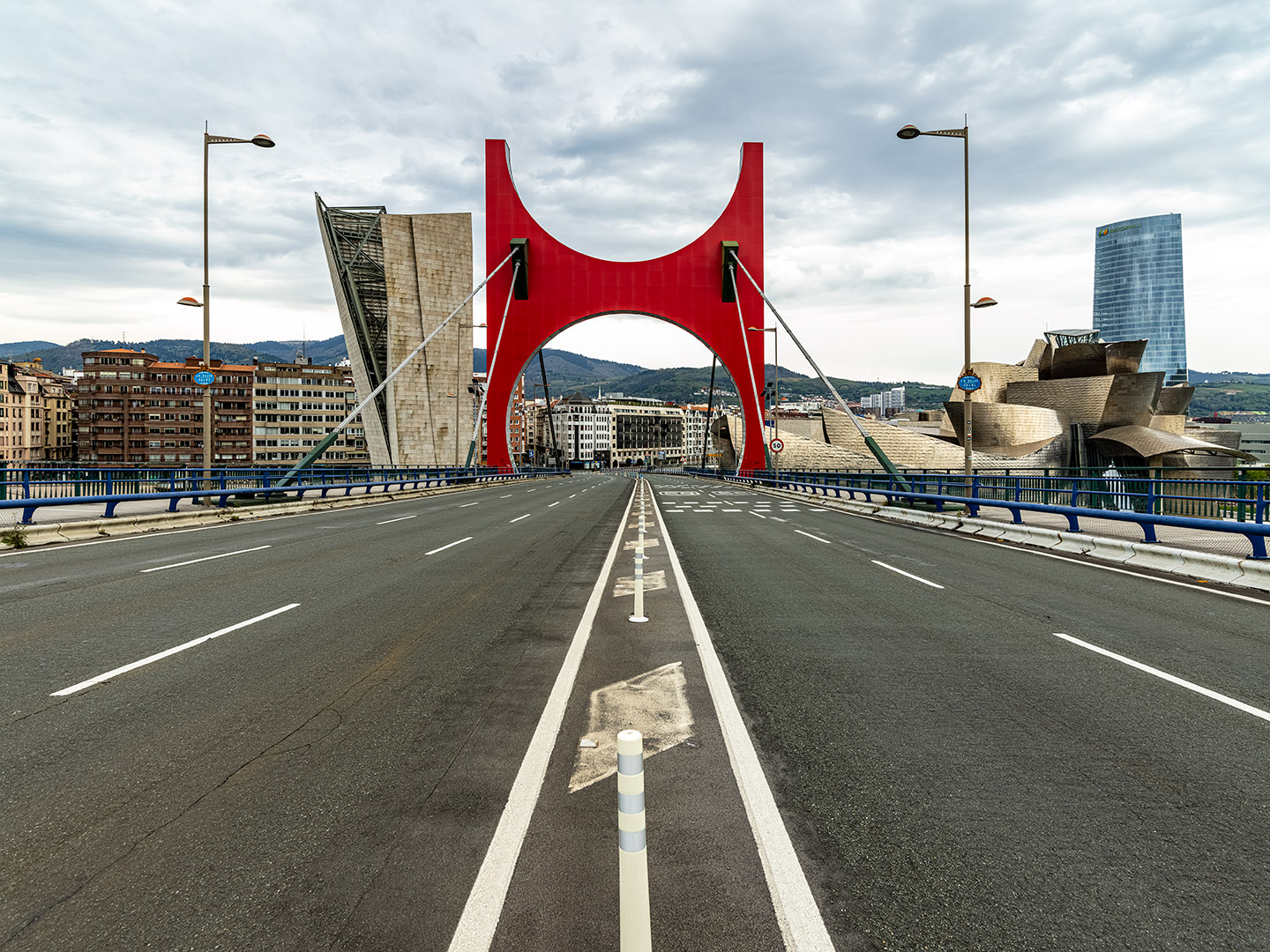

La Salve brigde 04-10-2020 11:15 am (Puente de La Salve 10-04-2020 11:15 h), 2020
Direct printing on Dibond
200 x 266 cm


Gran Vía D. Diego López de Haro 04-10-2020 2:04 pm (Gran Vía D. Diego López de Haro 10-04-2020 14:04 h), 2020
Direct printing on Dibond
170 x 226,5 cm
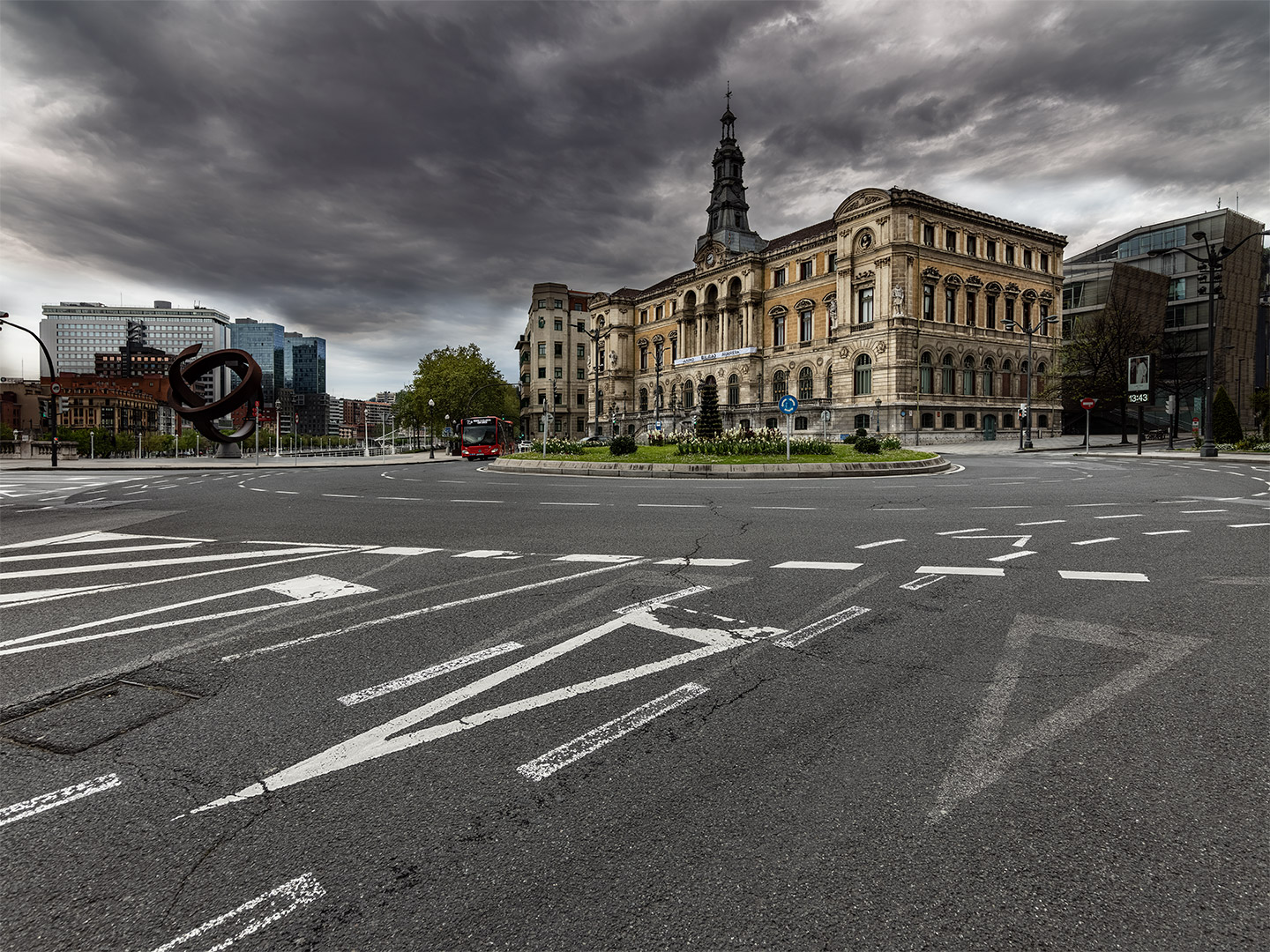

Ernesto Erkoreka Square 04-10-2020 12:46 pm (Plaza Ernesto Erkoreka 10-04-2020 12:46 h), 2020
Direct printing on Dibond
180 x 240 cm
The red light. Me, stopped
Carlos del Amor
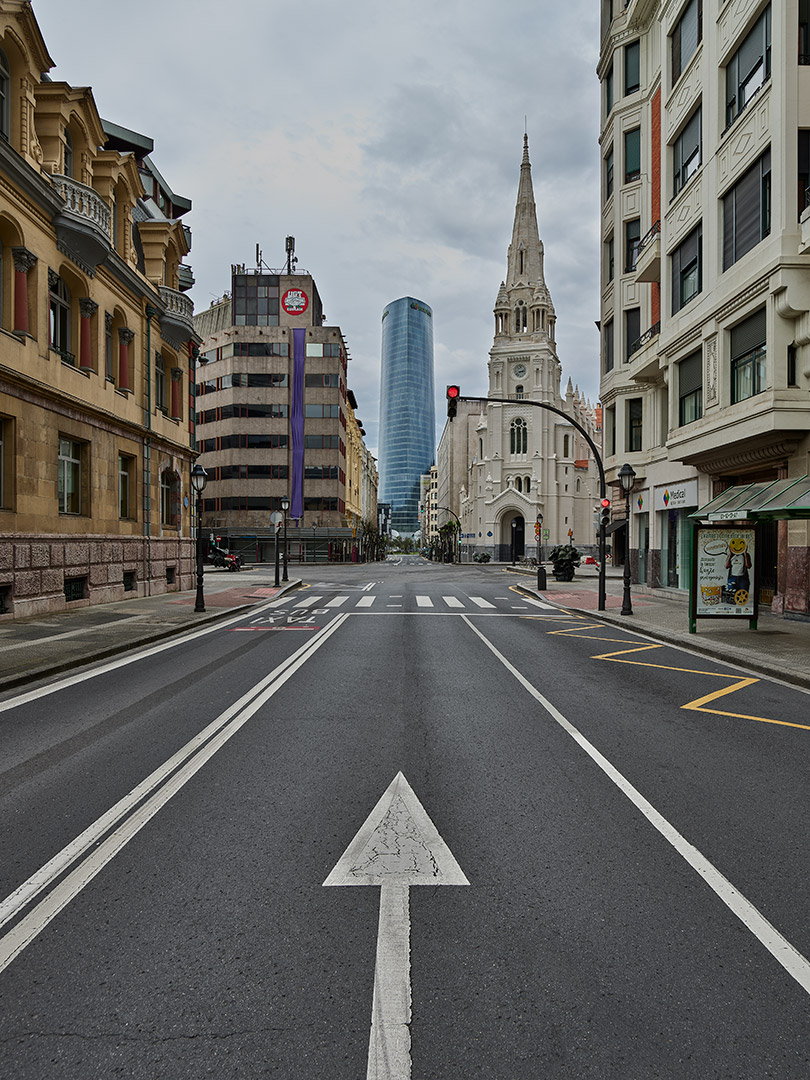

Calle Elcano 04-10-2020 2:16 pm (Calle Elcano 10-04-2020 14:16 h), 2020
Direct print on Dibond
200 x 150 cm
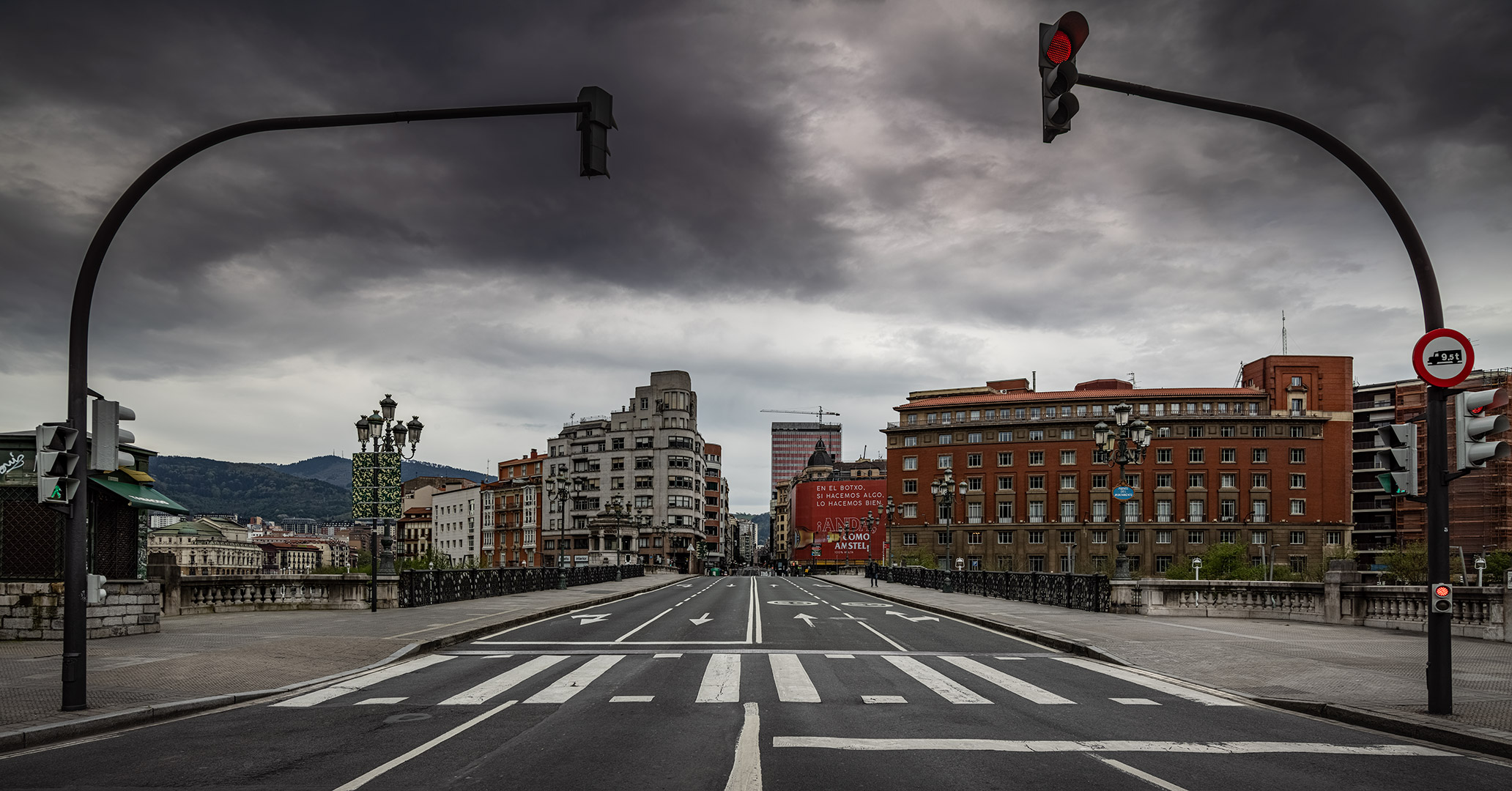

Bridge to City Hall 10-04-2020 12:41 pm (Puente del Ayuntamiento 10-04-2020 12:41 h), 2020
Direct printing on Dibond
156 x 300 cm
NOW I CAN
FEEL YOU,
NOW I CAN'T


Gran Vía D. Diego López de Haro 04-12-2020 4:16 pm (Gran Vía D. Diego López de Haro 12-04-2020 16:16 h), 2020
Direct printing on Dibond
200 x 144,7 cm
NOW I CAN
SEE YOU
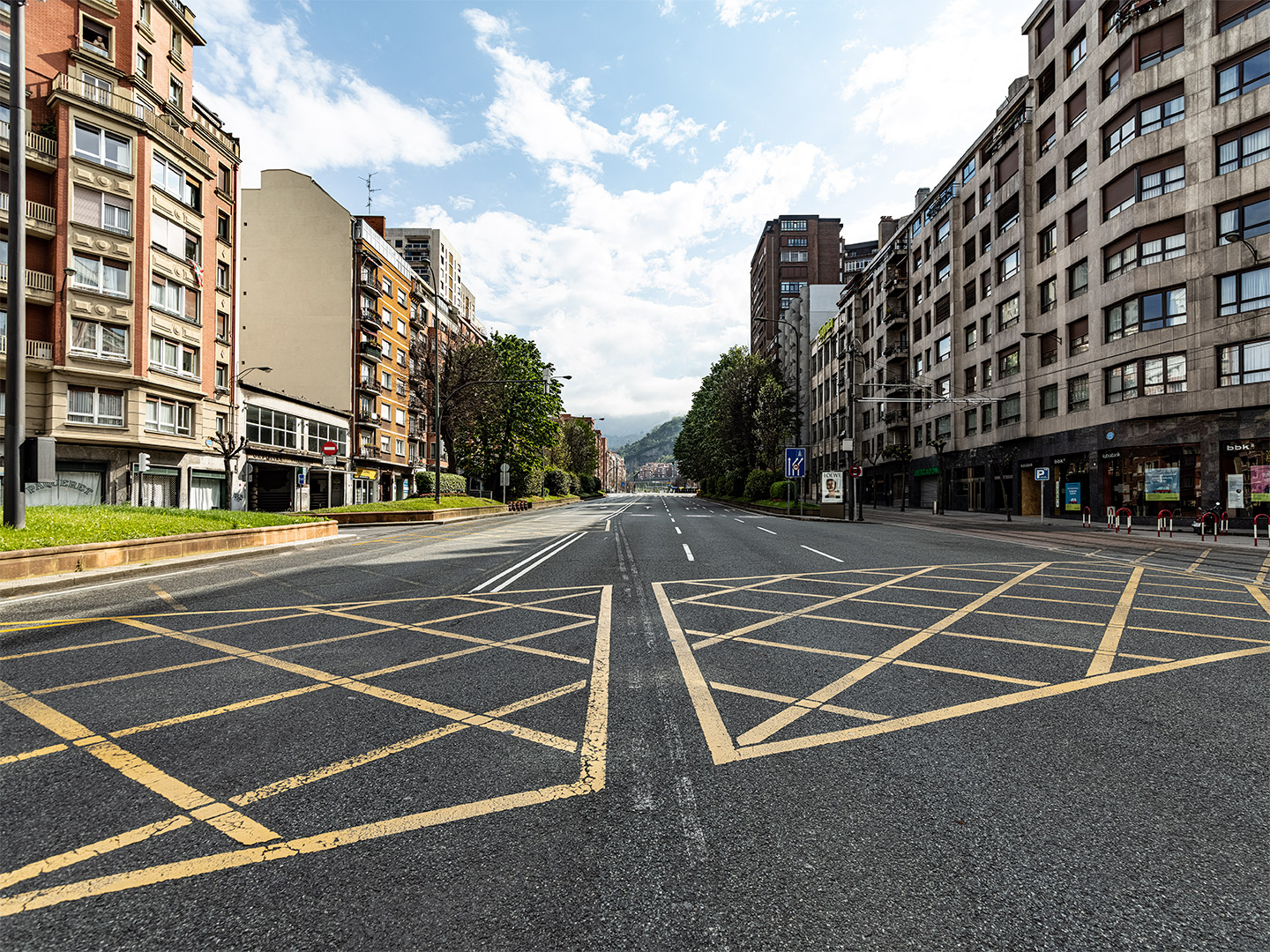

Avenida Sabino Arana 04-12-2020 6:19 pm (Avenida Sabino Arana 12-04-2020 18:19 h), 2020
Direct printing on Dibond
169,9 x 225,5 cm
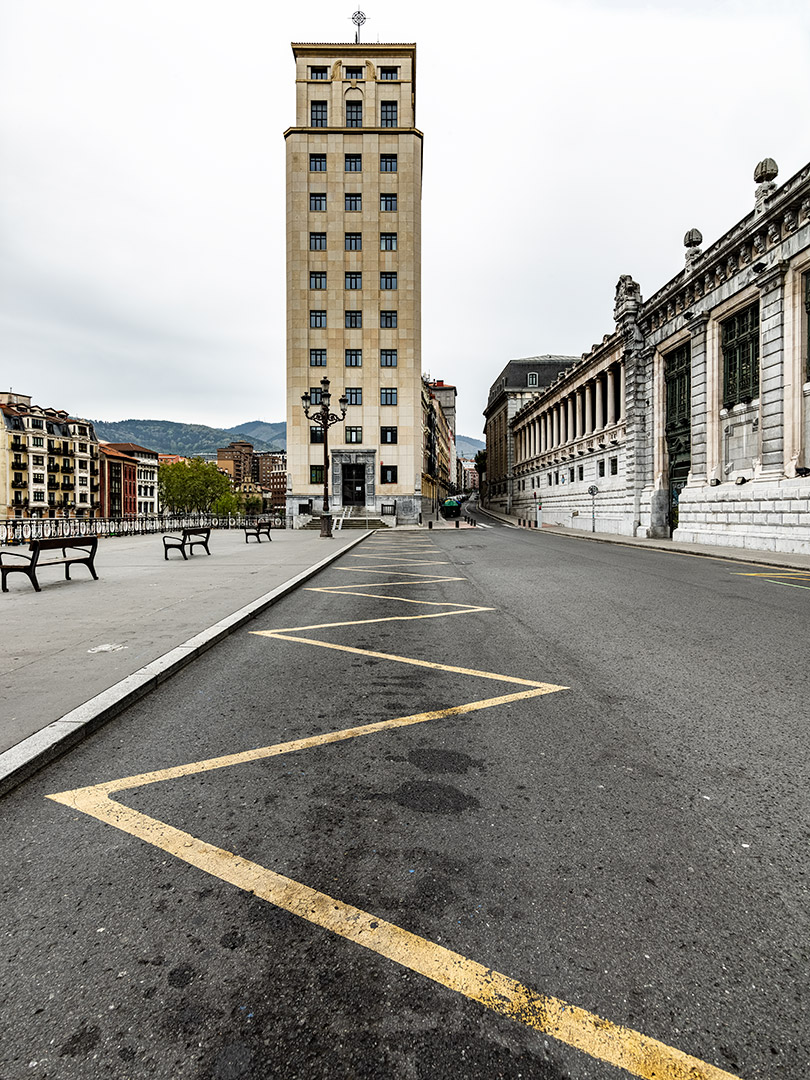

Calle Bailén 04-10-2020, 5:03 pm (Calle Bailén 10-04-2020 17:03 h), 2020
Direct print on Dibond
200 x 150 cm
Now I miss the hustle and bustle, and many other things I used to avoid
Carlos del Amor


Metro Bilbao 1 6:28 pm, 2020
Direct printing on Dibond
124,6 x 300 cm
We’ll go back to the places we dreamed of going, to the destinations that have been erased from our maps
Carlos del Amor
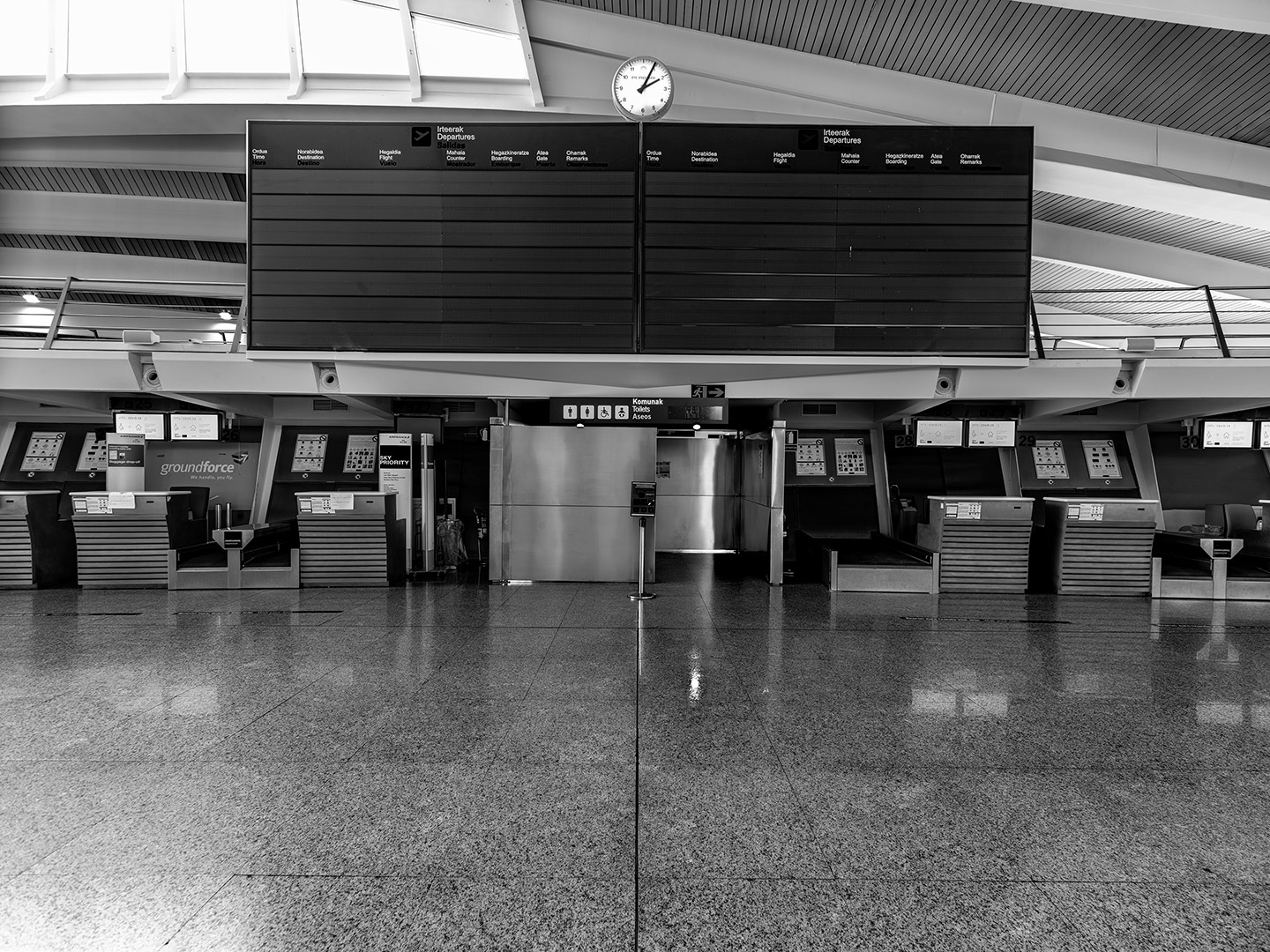

Bilbao Airport 04-11-2020 1:07 pm (Aeropuerto de Bilbao, 11-04-2020 13:07 h), 2020
Direct printing on Dibond
180 x 240 cm
Waiting for life to get started again
Carlos del Amor
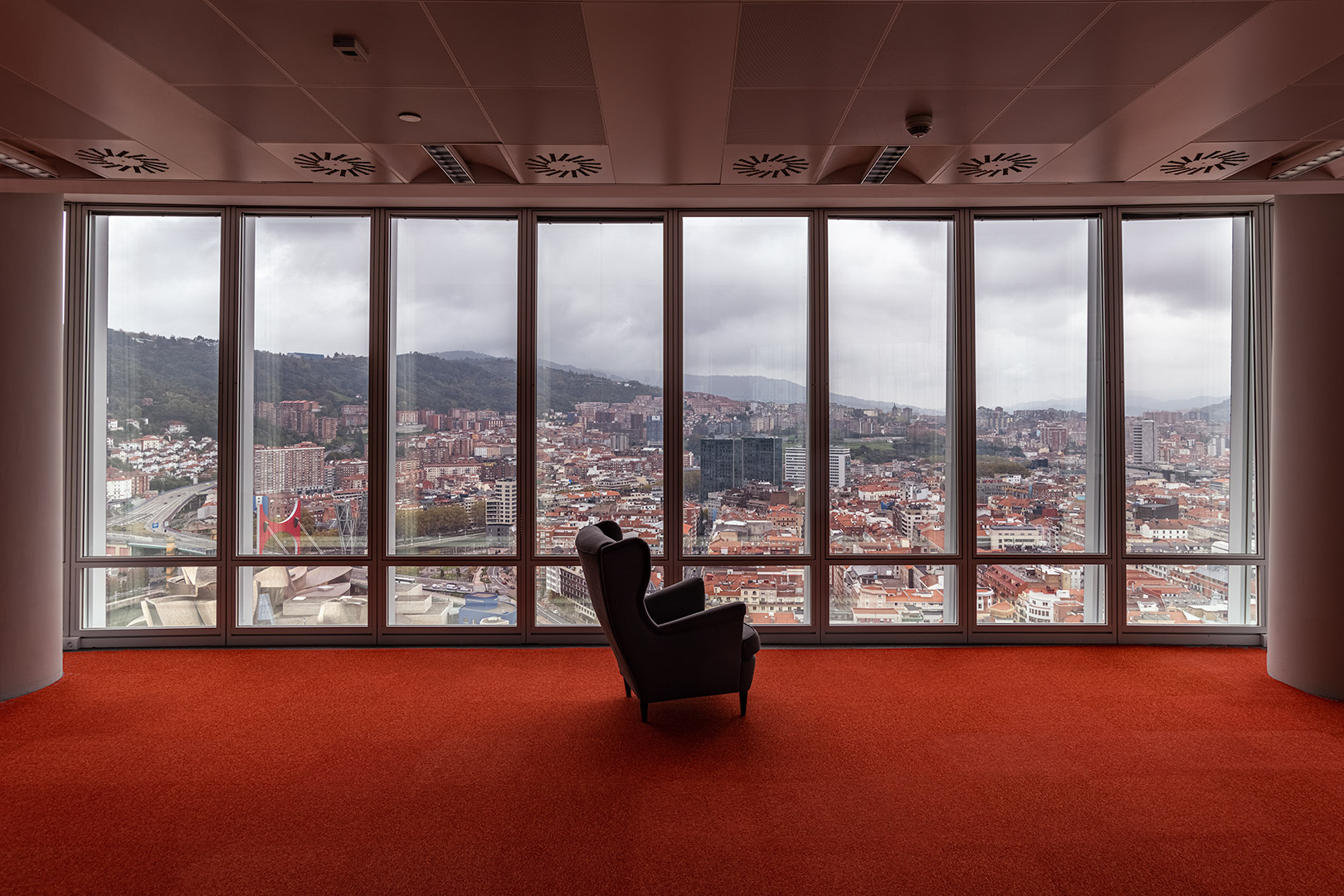

Iberdrola Tower. 28th floor 04-11-2020 2:55 pm (Torre Iberdrola. Planta 28 11-04-2020 15:36 h), 2020
Direct printing on Dibond
200 x 300 cm
AS SNOW
FALLING

GROUND
